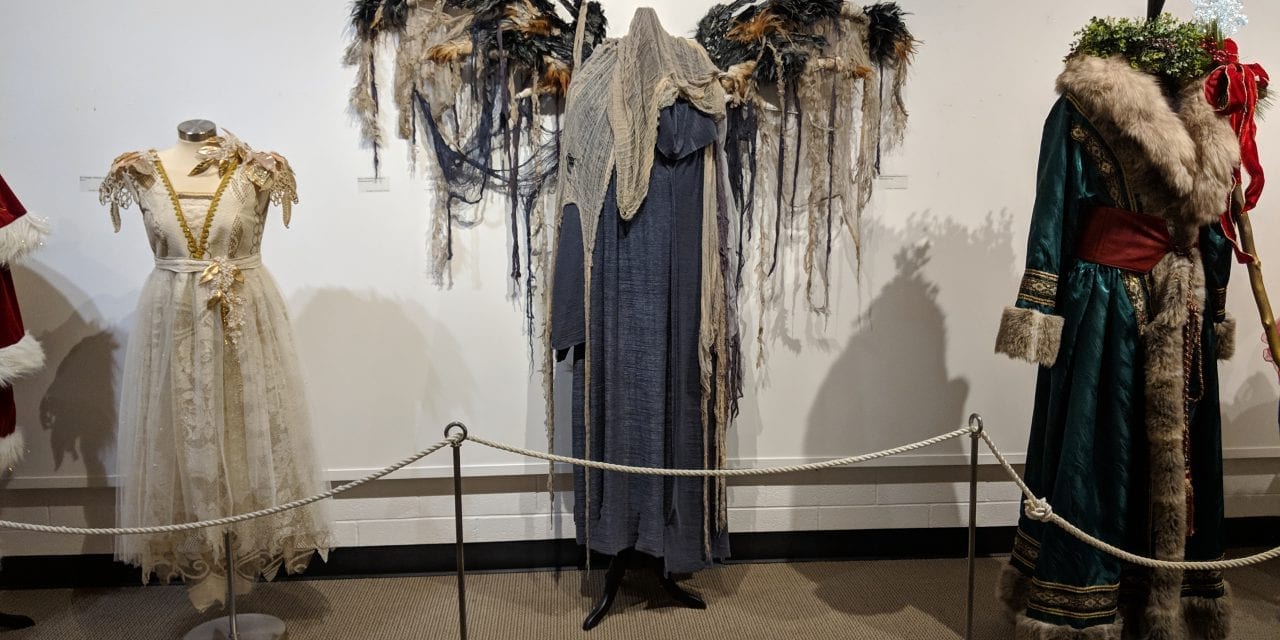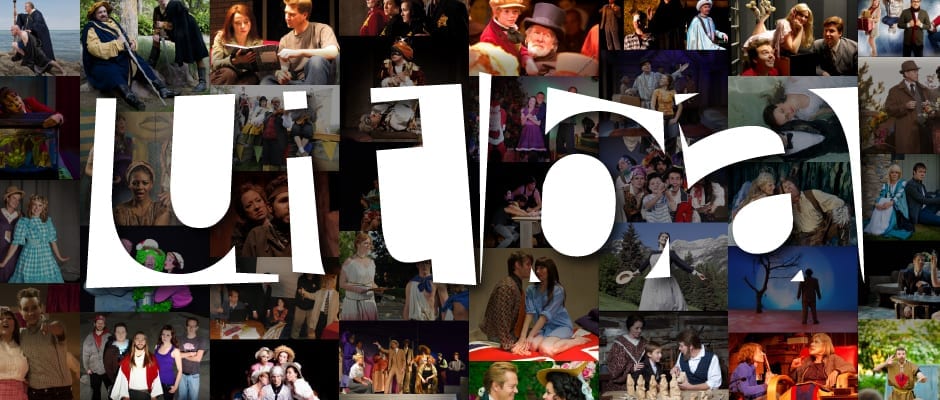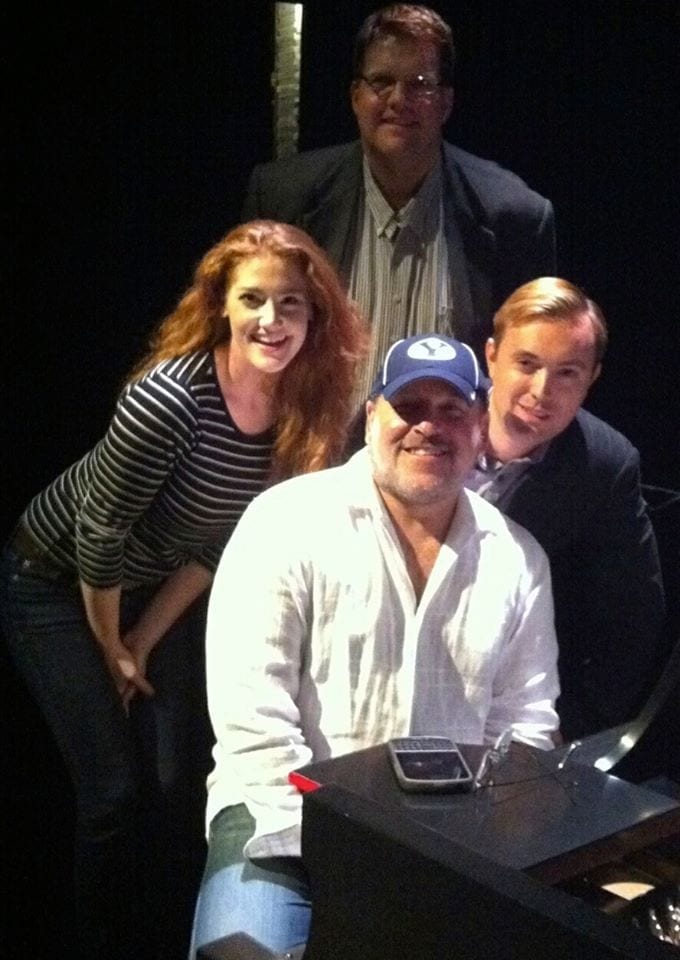BRIGHAM CITY — Every year at the first of September, long before most people give it a thought, I sit my kids down and ask them one of the most important questions of the year: what are we going to dress up as for Halloween? Halloween is my favorite holiday, and I ask this critical question as early as I can so I’ll have plenty of time to work on my sewing machine. I love to spend hours turning flat bolts of fabric into wearable art for my family to enjoy all October long. I absolutely love costumes! I love the look, the feel, the process of designing and creating, and the pleasure of wearing a good costume. Given my love of costumes, I was understandably very excited to hear about the new exhibit at the Brigham City Museum.

Ballerina costume brought to the exhibit by Ballet West. Photo by Heather Hurd.
Kaia Michaelis, the director and curator of the museum, explained that she’d been planning on doing this exhibit for quite some time. It was obvious to me that Michaelis shared my love of costumes as we walked through the exhibit. It clearly took a good deal of coordination between Michaelis and the companies involved, but the final product is stunning. The exhibit is organized into six sections: five for the companies featured and an interactive/educational section. The costumes are all designed, made, and utilized by performers on stages around Utah.
The companies involved include the Utah Shakespeare Festival, Ballet West, Utah Opera, and the Heritage Theatre. These companies are all incredibly different in the kind of art that they create, which can be seen in the different kinds of costumes that their companies make for the performers.

Victorian gown submitted to the exhibit by Utah Opera. Photo by Heather Hurd.
The primary consideration for any costume designer is what the actor will need to do while wearing the costume. The costumes from Ballet West are stunning and designed to highlight the movement of the dancers. These costumes were a dazzling feast of brocade, tulle, sequins, and appliques, all designed to move with very petite dancers as they fly about the stage.
Costumes from the Utah Opera are created with very different considerations in mind. Costumes must support (but not constrict) the singers, as well as fit the character. Michaelis explained that the pieces collected from the Opera seem to be quite historically accurate in design and construction. I particularly loved the Victorian bustled gown of Birdie in Regina, which is a gorgeous frock. Michaelis explained that when she put this dress on the mannequin, she could see that it was obviously altered at some point to fit a much smaller actress and was taken in quite a bit. I love that a spectacular dress like this would be used over and over while leaving avenues to tailor it for a new actress each time.

Prospero’s costume in The Tempest. Photo by Heather Hurd.
The exhibit does well at showing how expansive the costuming profession can be. Near the Victorian gown is a vintage frock from the 1940s. Across the room from that is a medieval gown—and some superb Elizabethan dresses; however, it certainly isn’t all dresses. There are some excellent costumes for actors as well. I enjoyed the costumes that are designed to look like leather armor and even chain mail. The male piece I loved most was Prospero’s coat from Utah Shakespeare’s Festival’s production of The Tempest. It is an entrancing custom-printed fabric which seems to be sketches and writings of Leonardo da Vinci. The costume must be meant to show how a higher knowledge (like that of Prospero and da Vinci) would seem like magic to the ‘lesser beings’ around them. A bold design like this can say so much on a stage before the actor has even uttered a word.

Ugly Witch sketch by Mallory Maria Procha. Photo provided by Kaia Michaelis.
I didn’t have to guess as much with other dresses as to what the designer was layering into the costume because the museum also has several original design sketches posted nearby. A featured treasure is from a production of Into the Woods; the Ugly Witch costume design sketch by Mallory Maria Procha has a beautiful watercolor painting which shows how the ragged-looking, yet amazingly sturdy, costume will come alive with light and movement.
While many of the companies use rich fabrics and the finest trims to make the costumes sing on stage, I don’t want to overlook the costumes submitted by the local Heritage Theatre. This community theatre has some pieces that show the virtue of creativity, collaboration, and resourcefulness that is often needed to pull off a production on a budget. Their Christmas Carol costumes are especially splendid as a grouping.

Joseph’s dreamcoat. Photo by Heather Hurd.
The exhibit is also interactive, with an educational section for children. Here, kids (or adults) can feel different kinds of fabric, design their own costumes, play a little dress up, and learn about gel lights which can affect a fabric’s appearance on stage. And any fan of Joseph and the Amazing Technicolor Dream Coat will enjoy seeing the iconic coat up-close to admire all the detail woven in. It is truly a thought-provoking piece of textile art.
I recommend this exhibit to anyone who has an interest in theatre, historical costuming, art, or just dressing up for fun. It is kid-friendly as well as educational. I took my children and husband with me and they enjoyed it immensely. We even got a few ideas for costumes they would like to wear. It made me want to go home and pull out the sewing machine and get an even earlier head-start for next Halloween.





